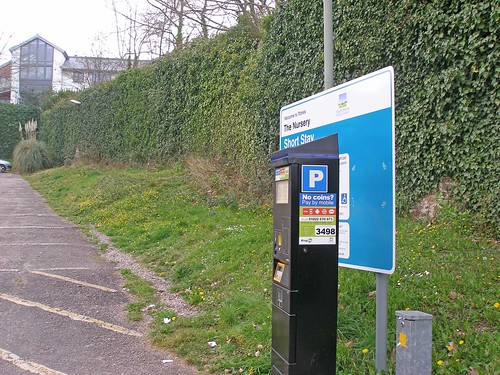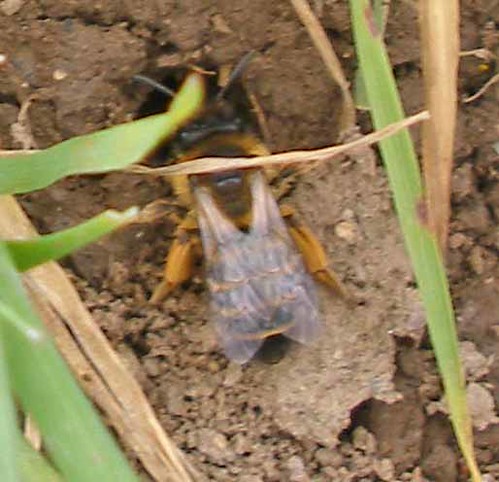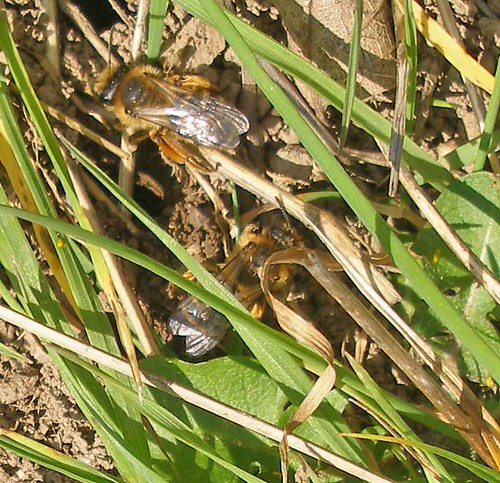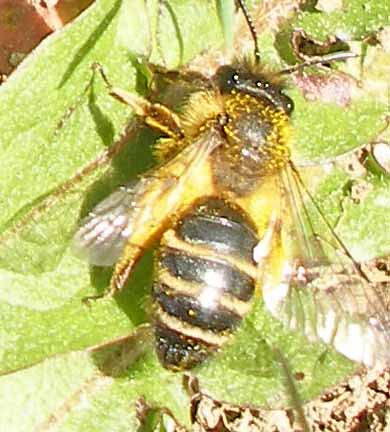The young woman sitting in her car rolled the window down and enquired: “Would you mind telling me what you are doing?” I was in one of the town centre car parks adjacent to the Leechwell Garden and had been peering at a bank covered with scrappy grass and flowers, occasionally taking photographs. She continued hesitantly, asking if perhaps I was interested in the wild flowers. She was right, of course, but that was only part of the story.
The car park is called the Nursery, its incongruous name purloining a bit of local history. Difficult as it is to believe, until the early 1980s this part of central Totnes housed several fine commercial market gardens. All kinds of vegetables were produced in season and sold through shops in the town. The land that now forms the Nursery car park used to be covered with greenhouses growing tomatoes, lettuces and out of season chrysanthemums.

I find it sad that these very productive market gardens were tarmacked over to provide car parking but that is what happened. Narrow banks of soil were left around the parking area, perhaps to leaven the bleakness. Some of these banks are now covered with brambles, others with grass. The bank I have been watching is about ten feet wide and south facing. It is mostly covered with grass although there are a few exposed areas of friable soil; at this time of year there is a good population of flowering dandelions and celandines. Behind the bank is a high wall clad in ivy and on sunny days, the area gets quite warm attracting many insects.


Last year, my friend Susan Taylor told me about some solitary mining bees living in this bank. I had a look, but didn’t study them properly, mostly owing to my ignorance. This year I decided to try to identify the inhabitants and occasionally popped in to the car park to see if anything was happening. It wasn’t until the third week of March that I was rewarded with my first sighting of the solitary bees. On a warm, sunny day I found a cloud of small, slender bees, each about two thirds the size of a honeybee. They were flying about in an excited, staccato manner about twelve inches above the ground repeatedly changing direction, occasionally bumping in to one another, occasionally stopping to feed from dandelions. Susan Taylor describes this behaviour as their “Sun Dance” and they do seem to fly only when it is warm and sunny. From my photographs, I could see their black abdomen with prominent white stripes and their thorax and face decorated with pale brown hairs.



The “Sun Dance” continued on warm days and then about two weeks after I first saw the small bees I came across an area of friable soil in the bank with some prominent holes which I assume are the nests. Here I saw a few larger bees that were otherwise quite similar in appearance to the “Sun Dancers”. There was one clear difference apart from size and that was the orange-yellow hair on their upper back legs. They were also behaving quite differently, crawling around near the holes but rarely entering. I didn’t see any evidence of mating but a few days later I began to see some of these larger bees returning to the holes loaded with chrome-yellow pollen and quickly disappearing inside to equip their nests. On good days, the smaller bees were still evident but in gradually decreasing numbers. The larger bees have continued to collect pollen; the dandelions are declining but many local fruit trees are now blossom-covered so there is no shortage.

So, what have I been seeing? I have compared photographs of my car park-bees with pictures in bee books and with the many photographs of solitary bees on the internet. It is very difficult to make a firm identification, but I will offer a suggestion. The smaller bees are likely to be males and the larger bees the females of the same species. What we have called the “Sun Dance” is a crowd of males waiting for the females and getting over-excited, rather like sulky adolescent boys. I did not witness mating but collection of pollen and nest building are performed only by mated females. Their early emergence, their nest location, the complete white bands and the orange-yellow leg-hairs on females but not males suggest Andrena flavipes, the Yellow-legged Mining Bee. These are common mining bees that build nests in tunnels in soil banks. They are found in the southern UK and may have a second brood in mid-summer; I shall have to keep watch.
It would be interesting to hear what others think about this tentative identification.
………………………………………..
But why am I interested in these bees if they are not rare? Why am I taking the trouble to watch them and take photographs?
I believe it is important to document these creatures, to get to know their life cycles and spread the word. Their emergence and nest-building each spring is one of nature’s amazing phenomena and I feel privileged to watch. These bees are also important pollinators; it’s good to know they are around and we should aim to support them.
I find it fascinating that these small lives are being lived in a busy town centre car park, literally under our noses. Perhaps realising that there is life in the soil banks makes up in part for the loss of the market gardens?
I explained some of this to the young woman in the car and she seemed interested, if a little bemused. It’s not every day you stop in a car park and get an enthusiastic lecture on solitary bees!


I’m not sure who you’ve been talking to, but there is so much to learn about all creatures, rare or not. I always appreciate the opportunity to look at something I see every day in a different way, or to learn something new about it. Anyone who thinks they know all there is to know about wild creatures is pretty tedious ( believe me, you meet a lot of beekeepers who have this attitude). Keep doing what you are doing (although you might want to make the lurking in car parks with a camera a little less obvious….)
LikeLike
Thanks for the supportive comment, I will continue looking but try to limit my lurking.
LikeLike
What a lovely story! There is something rather modern and poignant about watching solitary mining bees in a town car park. I find it absolutely fascinating watching them. I agree with your ID, I have this one over here and I have seen it nesting in the garden but it must have been later in the season for I have never seen the male or the Sun Dance. Amelia
LikeLiked by 1 person
Thanks Amelia. I agree, there is something rather wonderful about these ancient creatures going about their business right under the noses of flashy modern cars and their owners. Thanks for the ID.
LikeLike
Thanks for braving the questions of the public to bring us these photos! Long may the bees visit the dandelions.
LikeLike
Thanks Emily, it does mean that I have to take dandelions more seriously now though!
LikeLike